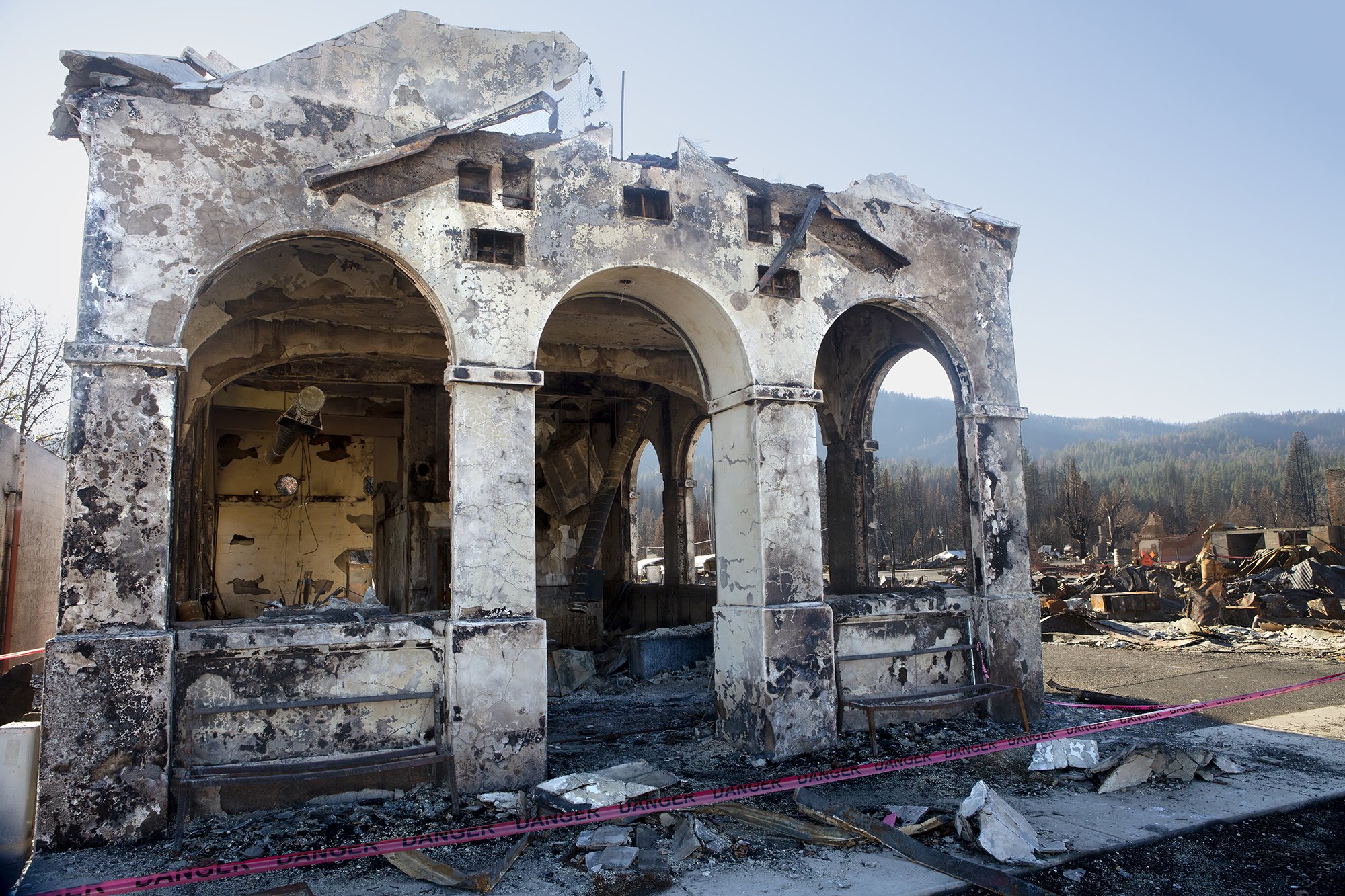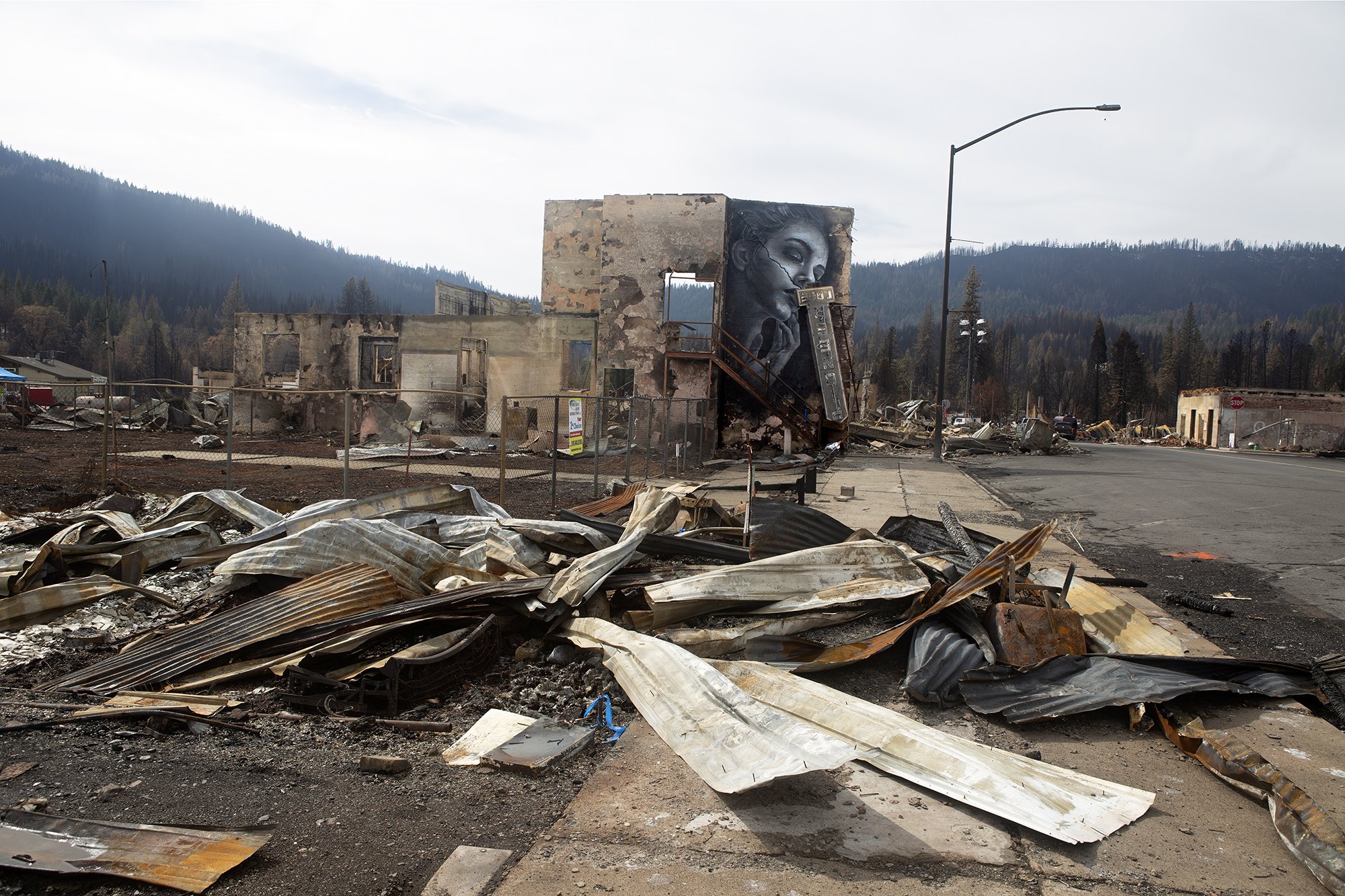REQUIEM: THE REMAINS OF THE DAY, AUGUST 4, 2021, GREENVILLE, CA
I first went to Greenville after the Dixie Fire in November 2021 with the intention of photographing and interviewing people who had been displaced by the catastrophic fire. I drove 20 miles over the mountains on CA 89 from Quincy and down several miles until I came upon the actual site of Greenville and saw the almost unimaginable devastation of the fire. I was mesmerized by the charred and twisted images of the once-thriving community and began to document the impact of the fire on the landscape. The complete absence of the nearly 1000 residents in the midst of what remained of the charred remains of their personal possessions strangely evoked their presence. The result was the exhibit Requiem: The Remains of the Day.
The exhibit is a departure for me — devoid of people or portraits, I hoped that the raw landscapes with only the charred personal remains of its residents would ultimately evoke their presence. While much of my earlier work was about the survival of men and women and youth impacted by a criminal justice system that is skewed against the poor and marginalized, Requiem: The Remains of the Day is about the devastation and near obliteration of the small Sierra town caused in large part by manmade climate change and industrial greed. But, as is always the case, the impact of such disasters falls hardest on lower-income populations. Greenville was no exception; a town of 1000 lower working-class residents displaced, most never to return.
On August 4, 2021, at approximately 7:30 PM the Dixie Fire roared through the small town of Greenville, CA. Cresting the Sierra Nevada Mountain Range, the fire obliterated the gold rush era town, where many wooden buildings had stood for over a century. A gas station, church, hotel, museum, and bar were among the structures gutted, along with nearly 100 family homes, schools, and commercial businesses.
In less than 45 minutes much of the town of Greenville was essentially wiped off the map, reducing peoples’ lives to blistered, burned-out metal. Officially caused by a Pacific Gas and Electric Company equipment failure, the fire was fueled by climate change. Rising greenhouse gas emissions, increased temperatures, and drought, along with overgrown forests caused by decades of fire suppression and the rapid population growth at the edges of forests predisposed the land to devastating fire. According to the First Street Foundation, one in six Americans live in areas with significant wildfire risk; minority communities face the greatest risk. Human-caused global warming, while not the only factor, has created “the most significant economic climate risk across the country.”
As a young girl in the late 1950s, I heard my parents and older siblings whispering about the fear of nuclear war with Cuba. Fast forward decades, today the conversation is less about imminent nuclear war on our soil or at least more about the existential global threat of manmade climate change.
I hope that Requiem: Remains of the Day will serve as a warning and a challenge that tells the story of a nearly “invisible” villain — the catastrophic impact of climate change on the small Sierra town of Greenville. It is a call for action. This villain poses an alarming threat not just to this small Sierra town but to all our towns — to our planet.
— Ruth Morgan
The photographs in this series are printed at 40 x 60 inches with the exception of the overview image from the hill, which is 56 x 84 inches. A selection of images from the series is available below. More images are available by request.
Click here for exhibition details, installation views, a video, and the curator’s statement. View the digital exhibition catalogue here.

















